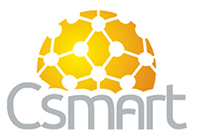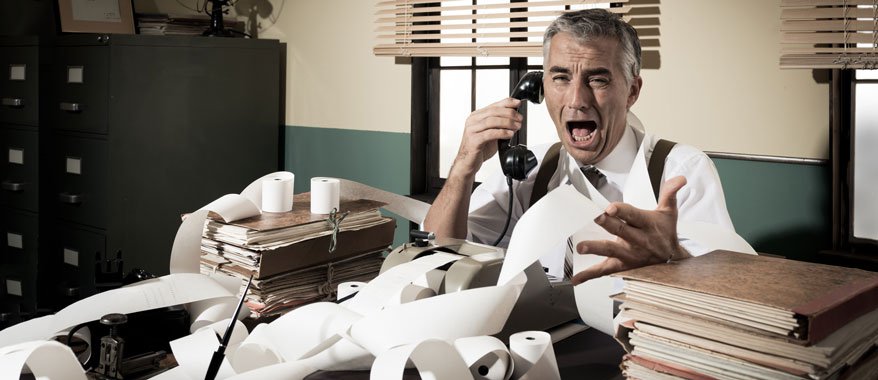You work hard to provide your customers with the best product, at the best price, with the best service. But what you may not realize is that outdated business systems could be driving customers out the door. Read on to find four ways old tech could be costing you business – and how some companies have fixed the problem.
1. Millennials are coming, and they now expect mobile
Millennials are now the largest generation in history and they’re coming of age, and spending power, in the next five years. By 2020 millennials will make up nearly 30% of all shoppers and account for 1.4 trillion in retail sales.
But their technology needs and expectations are putting pressure on all traditional bricks and mortar businesses. Why? Because they like to pay differently. Millennials not only use less physical cash but are also avoiding traditional credit cards (around 63% of Millennials don’t own a credit card). That’s if they even go to the counter to pay.
Mobile is now their preferred way to purchase. From ordering via in-store apps to mobile payment services like Apple Pay and PayPal. Around 50% of Millennials say they’ll go elsewhere if a businesses’ mobile customer experience is no good.
And businesses benefit from serving their customers in this way. Research shows that restaurants deploying a mobile POS see a 10% increase in average order amount. And one café running LS Nav Hospitality (with integrated mPOS) significantly reduced the costs of employing wait staff. Instead they invested in runners (on a lower pay grade) to transport food to and from the kitchen, leaving the higher qualified (and more expensive waiters) to focus on providing excellent customer service.
2. Customers can’t wait, and won’t wait
As far back as the 1950s building owners installed mirrors next to elevators to reduce complaints about waiting times. You see, the research showed that people were less likely to notice waiting times if they had something else to do (i.e. look at themselves in the mirror while waiting for the lift to arrive).
Unfortunately, mirrors at the counter won’t cut it as consumers increasingly expect everything on-demand. With the proliferation of smartphones, impatient customers can be on their phone, searching for an alternative, and have it paid for and ready to collect — before they even get to the front of the line.
Blue Mountain, one of Canada’s largest resorts, hosts over 2 million guests every year. So even a small number of walkouts and missed sales opportunities would equal a big loss. Their operations are diverse covering everything from accommodation, attractions, and rentals, to restaurants and stores. Until recently these services were managed by 26 different systems which handled each function separately. So for one single customer completing a number of tasks like hiring skis, buying a life pass, and booking ski lessons was a slow and painful (by modern standards) process.
The company realized that updating various aging systems was too expensive and time-consuming. They took the leap and substituted their legacy systems with one, integrated, intelligent digital ecosystem across the business. Today customers can easily buy tickets, rentals, passes, bookings and more, quickly and with no down times.
This also allows the business to up-sell by creating custom packages and pushing related promotions, i.e. seeing a customer book a family room would allow them to promote children’s holiday activities or discount family meal times.
3. Smart marketing needs smarter systems
While different research says consumers see anything from 200 to 5000 marketing messages daily, only one thing’s for sure – consumers are saturated with marketing communications everywhere they look.
The only way to achieve cut through? Personalization. Around 70% of consumers say they prefer retailers to use their personal information to make their shopping experience more relevant, with more than half of consumers happy for brands to use their personal data to do so. Even retail behemoths like Target are investing heavily in customizing the shopping experience through digital channels to maintain market share. The challenge? Capturing and organizing customer data in a way that can be rolled out across in-store and digital promotions like money off codes, SMS and email marketing.
Futbolmania, one of the largest specialist football-related retailers in Spain, wanted to boost profits through running more sophisticated offers alongside a new customer loyalty scheme. But they were blocked by their disconnected company systems. Each store was capturing customer information locally – leading to inconsistent data capture and slowing store employees down. Company headquarters couldn’t effectively run campaigns.
The company implemented LS Nav across the business to facilitate the creation of a new set of digital loyalty cards. Membership was managed from head office and it became much easier for employees to enter information. Customer data was also linked to real-time sales reports. This helped the business create relevant and timely member offers and also identify their higher-value VIP customer base for additional benefits.
Better identification of VIPs is also important to Savile Row tailors, Gieves & Hawkes – currently holding three royal warrants, they have high standards, and high class customers, to maintain. They also found that after installing LS Nav sales staff could suddenly access valuable customer data at point of sale. “The better customer experience really comes into its own with our VIP customers. We can check account activity and give them a knowledgeable, friendly, first class service,” says Sam Thompson, IT Manager at Gieves and Hawkes.
4. Gain attention with better promotions
William Lever, the English philanthropist and industrialist who founded Unilever with his younger brother, famously said “I know half my advertising isn’t working, I just don’t know which half.” And many businesses feel the same way about tracking the results of sales promotions – particularly making the link between online promotions and in-store purchase.
Bristol Group Ltd holds the rights to distribute some of the world’s top tier drinks and spirits (Grey Goose, Rothmans, Moet Chandon) to wholesalers, bars and restaurants, hotels, grocery stores, gas stations, and duty-free shops across the Bahamas. But in the spirits industry, sales promotions are critical to introduce new products and drives sales of existing ones.
For instance, in one recent promotion Bristol recently gave away a free can of cranberry juice with the purchase of a bottle of vodka. Bristol’s previous system had difficulty tracking the effect of promotions on sales of particular items. Bristol now uses the price & promotions management functionality of LS Nav to quickly see the relationship between promotions and sales. This in turn allows the company to evaluate the effectiveness of the promotion and decide whether to offer similar promotions in future.
Don’t let aging tech make your business fall behind. Your customers today, and increasingly in the future, expect more sophistication in how they shop, pay, and interact with your brand overall. Building a strong foundation today doesn’t have to cost the earth, and the alternative – relying on outdated legacy systems – could be costing you customers.

